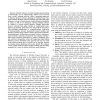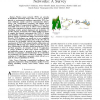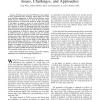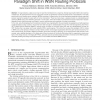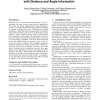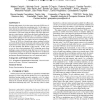DCOSS
2011
Springer
12 years 11 months ago
2011
Springer
—Modular software, in which strongly-separated units of functionality can be independently added to and removed from a node’s running software, offers a promising approach to e...
DCOSS
2011
Springer
12 years 11 months ago
2011
Springer
—Controlled sink mobility has been shown to be very beneficial in lifetime prolongation of wireless sensor networks (WSNs) by avoiding the typical hot-spot problem near the sink...
COMSUR
2011
12 years 11 months ago
2011
—Wireless sensor networks (WSNs) are networks of distributed autonomous devices that can sense or monitor physical or environmental conditions cooperatively. WSNs face many chall...
COMSUR
2011
12 years 11 months ago
2011
—Wireless sensor networks (WSNs) have been applied to many applications since emerging. Among them, one of the most important applications is Sensor Data Collections, where sense...
COMSUR
2011
12 years 11 months ago
2011
—In large networks, a data source may not reach the intended sink in a single hop, thereby requiring the traffic to be routed via multiple hops. An optimized choice of such rout...
SAC
2011
ACM
13 years 2 months ago
2011
ACM
A moving region whose location and extend change over time can imply topological changes such as region split and hole formation. To study this phenomenon is useful in many applic...
MOBISYS
2011
ACM
13 years 2 months ago
2011
ACM
Clock synchronization is critical for Wireless Sensor Networks (WSNs) due to the need of inter-node coordination and collaborative information processing. Although many message pa...
IPSN
2011
Springer
13 years 2 months ago
2011
Springer
Deployment of wireless sensors in real world environments is often a frustrating experience. The quality of radio links is highly coupled to unpredictable physical environments, l...
IPSN
2011
Springer
13 years 2 months ago
2011
Springer
Having access to accurate position information is a key requirement for many wireless sensor network applications. We present the design, implementation and evaluation of SpiderBa...
IPSN
2011
Springer
13 years 2 months ago
2011
Springer
Existing deployments of wireless sensor networks (WSNs) are often conceived as stand-alone monitoring tools. In this paper, we report instead on a deployment where the WSN is a ke...
